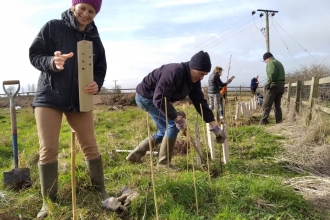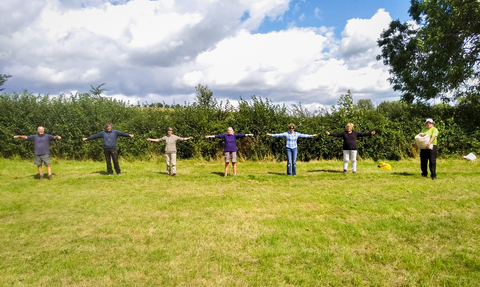
Hedgerow Havens volunteers sowing wildflower seeds at Quainton Recreation Ground. Picture: Marcus Militello
Hedgerow Havens case study: Quainton Rec
BBOWT's Hedgerow Havens project was delighted to work with Quainton parish on several occasions from 2018 to 2021. The village is lucky to have a conservation-motivated core both within and outside of the parish council.
On a first visit in summer 2020, once COVID-19 restriction had begun to lift, Hedgerow Havens project officer Marcus Militello took a walk around the village recreation ground with Claire Lucas of Quainton Parish Council. They discussed hedgerow management, Quainton’s plans for creating a traditional community orchard and what to do with a small, species-poor meadow.

Hedgerow Havens project officer Marcus Militello with residents of Quainton at the village recreation ground.
It was decided that increasing the number of flowering species in the meadow was the main target. Luckily, BBOWT manages a nearby suite of the most species-rich meadows in the whole of Buckinghamshire - the Upper Ray Meadows. To improve the meadow at 'Quainton rec', hay cut from the Upper Ray Meadows could be scattered in Quainton.
In order to restore a meadow like this, getting the site ready for the new seed is important. Certain species such as creeping thistle need to be removed from the target site as much as possible before sowing new seed. The ground disturbance associated with sowing seed will often lead to extensive germination of creeping thistle on open soil, and this causes a problem because - unsurprisingly - animals don’t like to eat hay that’s full of prickles!
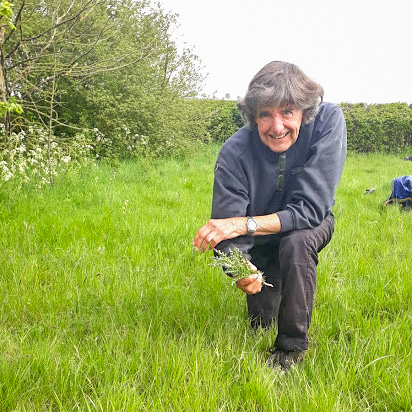
A Quainton resident helping pull thistles out of the village recreation ground. Picture: Marcus Militello
Volunteers from the Hedgerow Havens work party and Quainton Parish Council put in nearly a week of work on site in summer 2021 to remove thistles by hand. This was followed by a farmer running a chain harrow over the field to open up areas of bare ground for seeds to be sown into.
Meanwhile, seeds were being collected from the Upper Ray Meadows using a brush harvester. These were then dried and bagged before being sown by volunteers at the rec and rolled in.
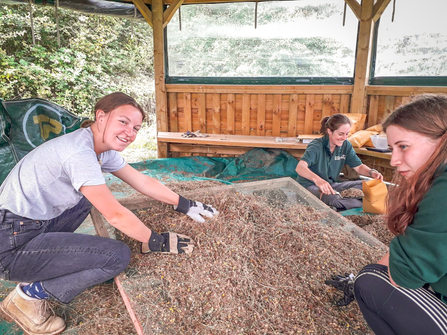
Drying out wildflower seeds collected from the Upper Ray Meadows as part of the Hedgerow Havens project. Picture: Marcus Militello
These seeds germinated in late 2021 and early 2022 and the meadow will continue to develop. Most of these wildflowers will initially put energy into growing leaves and roots in the first two years and then start to flower. The area will continue to be managed with a yearly hay cut going forwards.
The villagers also decided to create their community orchard: the first tree was planted in September 2021 and a first wassailing ceremony was held in January 2022.
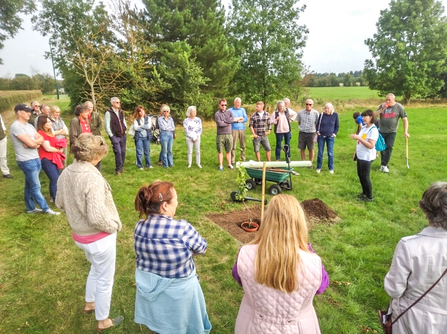
Villagers in Quainton planting the first apple tree in their community orchard at the conclusion of BBOWT's Hedgerow Havens project. Picture: Marcus Militello



